Two major local initiatives, Fairfax County’s Embark Richmond Highway and the Purple Line in Montgomery and Prince George’s counties, will provide additional travel options for the region’s residents. But the impact in the region will be even greater; Fairfax County Supervisor Rodney Lusk and Purple Line Coalition Corridor (PLCC) Executive Director Sheila Somashekhar discussed the co-benefits of the projects with the COG Board at its April meeting.
These projects exemplify ways area governments are working to provide greater access to transit while also optimizing the areas around it to create more transit-oriented communities (TOCs) in the region, an approach that can also advance equity, housing, and climate goals—key priorities outlined in and tied together by the board’s Region United planning framework for 2030.
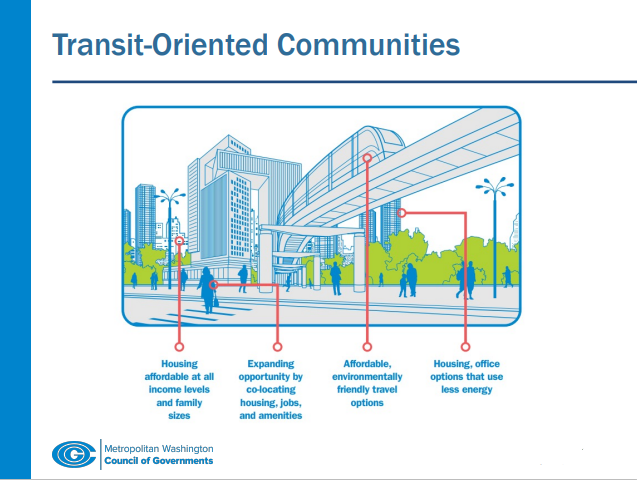
“Transit-oriented communities, or TOC, means more than just development,” explained COG Planning Data and Research Program Director, Tim Canan. “It means residents having access to housing affordable at all income levels and family sizes. It means increased access to transit…it also means employers can have greater access to a larger talent pool. Residents and workers have more access to transportation choices that are both affordable and environmentally friendly.”
And, added Canan, TOC means a “blend of land use” around transit, making living, working, and playing seamless in an area. All of this contributes to meeting the region’s goals for the next decade.
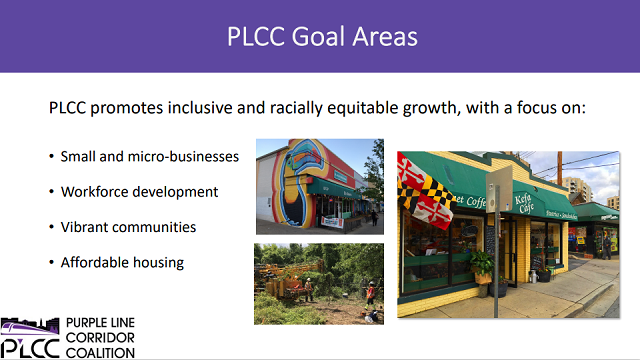
(Source: PLCC)
In Montgomery and Prince George’s counties, the Purple Line will connect New Carrolton to Bethesda, create new connections to MARC and Metro, and provide access to those that have been underserved by transit.
“Our focus is really looking at issues beyond the tracks, recognizing that the Purple Line is not just transit investment, it is community development investment,” said Somashekhar.
Somashekhar explained that they consider the Purple Line “corridor” as the area within a mile of the line; the goal of the coalition is to leverage the opportunity the Purple Line presents to help drive equitable growth and opportunity, particularly for low-income and business owners of color within the corridor. One way PLCC is doing this is by focusing on affordable housing. Its Housing Action Plan includes a goal of zero net loss of 17,000 affordably priced units within the corridor.
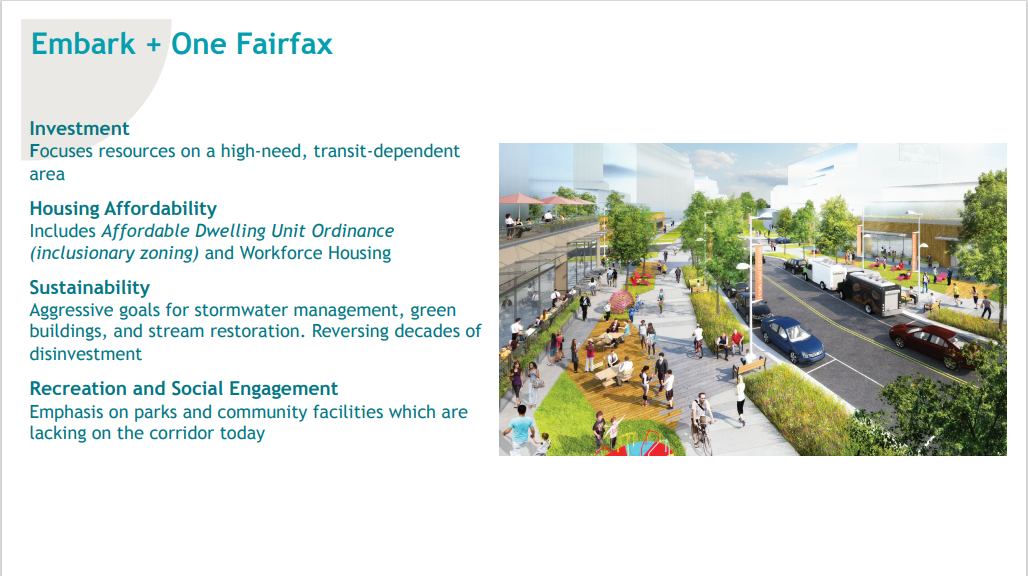
(Source: Fairfax County)
The Richmond Highway corridor is very diverse, has economically disadvantaged areas, and is very transit-dependent, explained Lusk. Part of the county’s plan to invest more in this corridor hinges on more transit-oriented development around its bus-rapid transit (BRT) stations, creating more of a “main street” community feel in those areas. Like PLCC, the county is prioritizing affordably priced housing production and preservation as it seeks mixed-use development along the corridor to support its BRT system, The One.
And it isn’t just local government agencies leading the way on this approach. WMATA recently announced its 10 Year Joint Development Strategic Plan which prioritizes inclusive development around transit.
“I love seeing projects and visions that reflect what we’ve coalesced on at COG and as it relates to equity,” said COG Board Chair and Arlington County Board Vice Chair Christian Dorsey.
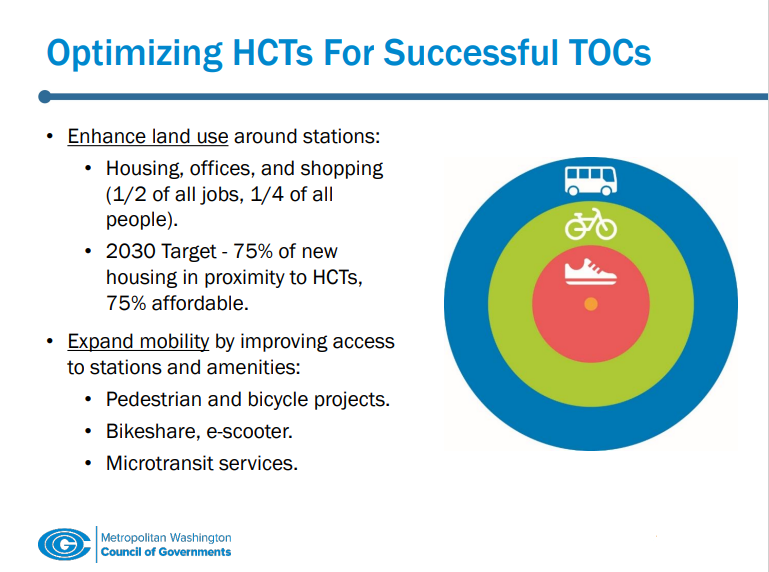
COG sees opportunity for creating even more TOCs across the region by optimizing the areas around High-Capacity Transit (HCTs) Station Areas—225 places around Metro, Commuter Rail, Light Rail, BRT, and Streetcar—that were endorsed by the COG Board of Directors and incorporated into its planning framework for the next decade. Enhancing land use and expanding access to transit are just a few ways this can be done. Specific actions could include adding housing at the right price points and providing bicycle and pedestrian infrastructure, bikeshare systems, or microtransit to connect transit to more people.
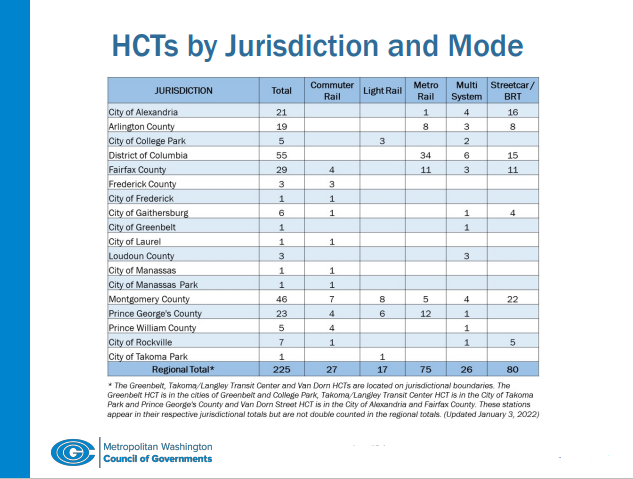
COG and its members will continue to work together to identify opportunities to accelerate action toward optimizing HCTs and creating TOCs. This will include identifying funding opportunities to further these priorities, such as COG’s Housing Affordability Planning Program grants and the TPB’s long-standing Transportation Land-Use Connections Program and new Transit Within Reach Program, among others.
MORE: Region United: Metropolitan Washington Planning Framework for 2030